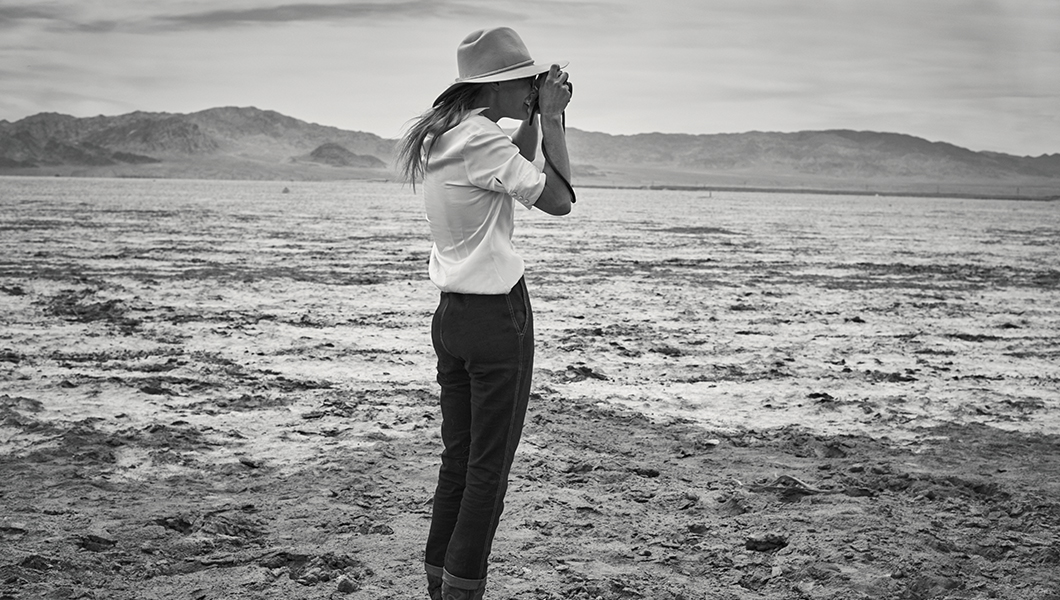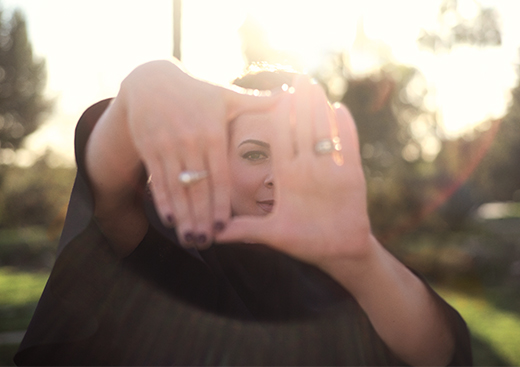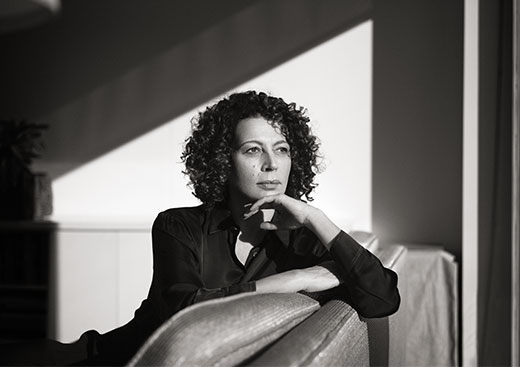When I first met the team at Humanity magazine, I expressed my desire to work behind the lens rather than in front of it. I adore acting, but I have discovered a fierce hunger to expand my contributions in the arts. Fortunately, Humanity was game. I was given total creative control to choose whom I would like to photograph and how I would like to capture them. This being my first time professionally published, I put an enormous amount of thought into my choices. Who is the definition of a great “Citizen of Humanity”? As this issue is a deeply inspiring and timely one, I began to think of the women I know who have made a significant impact, both in their professional lives and beyond. Three women came to mind immediately, and lucky for me, they all agreed to participate in this piece. The ideal trifecta was put into motion.
—
I met Donna Langley nearly two decades ago. I was 18 years old and the lead in Universal Pictures’ new movie, Blue Crush, a film about female surfers. Though admittedly I had never surfed in my life, I nonetheless felt a deep affinity to my character. We were both confronting our fears—though the desire to achieve our DREAM far eclipsed the trepidation. Little did I know it then, but a third party was also experiencing similar emotions. Blue Crush was Donna Langley’s first film as a junior executive at Universal. Over the years, I have loved watching her climb the mountain. I am certain it wasn’t easy. Getting to the top never is. However, Donna is known for her conviction and grace, and her extreme cool when encountering adversity. Later in life we connected again, but with a different goal in mind: To make the world a better place. Donna is deeply committed to Vital Voices, an impressive organization that devotes itself to shining a spotlight on women around the world who have literally been a vital voice to a vulnerable group or community. I recently produced a movie called Nona, about the devastating effect of human trafficking. I believe we are similar in that the focus remains the same but the mission expands. I knew Donna would be a perfect subject for this issue. I was thrilled when she agreed. I would be lying if I said I wasn’t nervous as I made the recent elevator ascent to Donna’s top-floor office. I wanted to take a photograph she would be proud of . . . to create an image that may surprise her. I knew exactly what I wanted—and Donna is a stunning subject. I only took 12 shots. As I was leaving, something caught my attention that epitomized why I love Donna Langley so much. There, sketched on the wall of a small enclave behind her desk, are the penciled markings of her children’s heights throughout the years. Yes, the top floor is an enormous accomplishment. But the writing on the wall is what gives us life.
—
I first noticed Courteney Monroe before I actually knew her name. I have always adored the National Geographic Channel. Who doesn’t love to travel the world, experience new cultures and discover the history of our Earth and its inhabitants? But something new was happening. Something fresh. Someone was clearly respecting the iconic yellow border—but also expanding the perspective of the frame. Oscar winner Geoffrey Rush as Albert Einstein on National Geographic? The kicker for me was when the show’s advertisement aired directly after Lady Gaga’s epic Super Bowl performance. Geoffrey Rush (as Einstein) plays a rendition of “Bad Romance” on the violin. Quite simply it was genius. These moments don’t happen accidentally. I had to know—who was the Wizard behind the Yellow Borders? Enter CEO Courteney Monroe. Incidentally, the week I requested to meet her, I was offered a role in Nat Geo’s next limited series, The Long Road Home. I have since had the extraordinary pleasure of getting to know Courteney throughout the making of the series and the release of it. She is dazzling. If the eyes are the windows to the soul, then hers are two steps ahead of you. She is complex, like a Ferrari, pushing the boundaries and expectations in both an inspirational and an aspirational way. The most stunning part of all? She is just getting started.
—
Martha Raddatz needs little introduction. Not only does she work tirelessly behind the lens, but she is also most likely to appear regularly on your television screen. (Though I will say, she is hardly looking to be a recognized “star”—one gets the sense that she is in front of the camera more for necessity than anything else.) Throughout my life, I have watched her career and held an enormous amount of admiration for her. If I were a journalist, I would want to be Martha Raddatz. She is the definition of BADASS. As chief global affairs correspondent for ABC News, she has traveled to the most dangerous places in the world. She has moderated presidential debates. She has revealed groundbreaking stories. (Does this ring a bell? On the fifth anniversary of the 2003 invasion of Iraq, Raddatz posed a question to Vice President Dick Cheney about public opinion polls showing that two-thirds of Americans had lost confidence in the war, a question to which Cheney responded by saying “So?”) She has seen war up close and personal.
Little did I know, war would be the element that would bring us together. The Long Road Home is Martha’s devastating account of “Black Sunday,” a battle during one of the deadliest periods of the Iraq War. In her book, she gives a vivid and agonizing description of the experiences soldiers endure away at war and their families’ difficult reality at home. It is Martha’s dedication, perseverance and intense personal reporting that revealed critical details of the 2004 ambush. She also brings a deep and piercing humanity to war that is not only heartbreaking but unique. It is this book that was identified by Courteney Monroe at National Geographic to be made into a limited series (where I was cast as Gina Denomy, wife of Captain Troy Denomy). We are so proud of the result, in which we sought to honor our troops and their sacrifice for our country. From knowing Martha as well as I do, I say this with my hand on my heart: In a time when we continually question the merit of the news—Is it real? Is it fake?—Martha Raddatz only seeks the truth. And nothing but the truth.
—
A leader in film. A leader in television. A leader in journalism. I hope you all enjoy these photographs and the interviews as much as I did creating them. All three of these women have had a profound impact on my life—and most likely, they have had an impact on yours too. Whether you know it or not.
—





